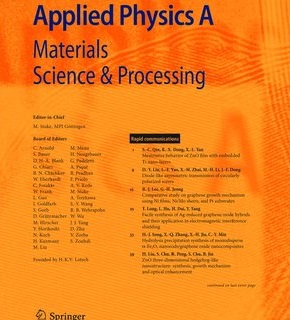Effect of nonmagnetic Ti substitution on the structural, magnetic and transport properties in pyrochlore iridate \(\text{Eu}_{{2}}(\text{Ir}_{1-x}\text{Ti}_{{x}})_{2}\text{O}_{{7}}\)
Abstract
We have studied the effect of nonmagnetic Ti substitution \(\text{Eu}_{{2}}(\text{Ir}_{1-x}\text{Ti}_{{x}})_{2}\text{O}_{{7}}\) with the help of electrical transport and magnetic measurement. Parent compound \((x=0)\) shows a thermally induced metal insulator transition (MIT) and a long range antiferromagnetic ordering below 120 K. The doping of Ti at the Ir site leads to minor structural modification that enhances orbital overlapping and hence improves the electrical transport properties. However, tuning of the spin-orbit coupling, electronic correlation (U) and site dilution due to Ti doping oppose the previous effect. As a result, MIT is disappeared and resistivity of the system throughout the temperature increases with Ti. The nature of the conduction mechanism at low temperature follows power law like variation. As \(\text{Ti}^{4+}\) is nonmagnetic, the introduction of Ti at Ir site dilutes the magnetic interaction at Ir octahedral network, which in turn decreases the magnetic moment and magnetic frustration in the system though the magnetic irreversibility temperature \((\text{T}_{{irr}})\) is hardly affected by Ti.

 求助内容:
求助内容: 应助结果提醒方式:
应助结果提醒方式:


